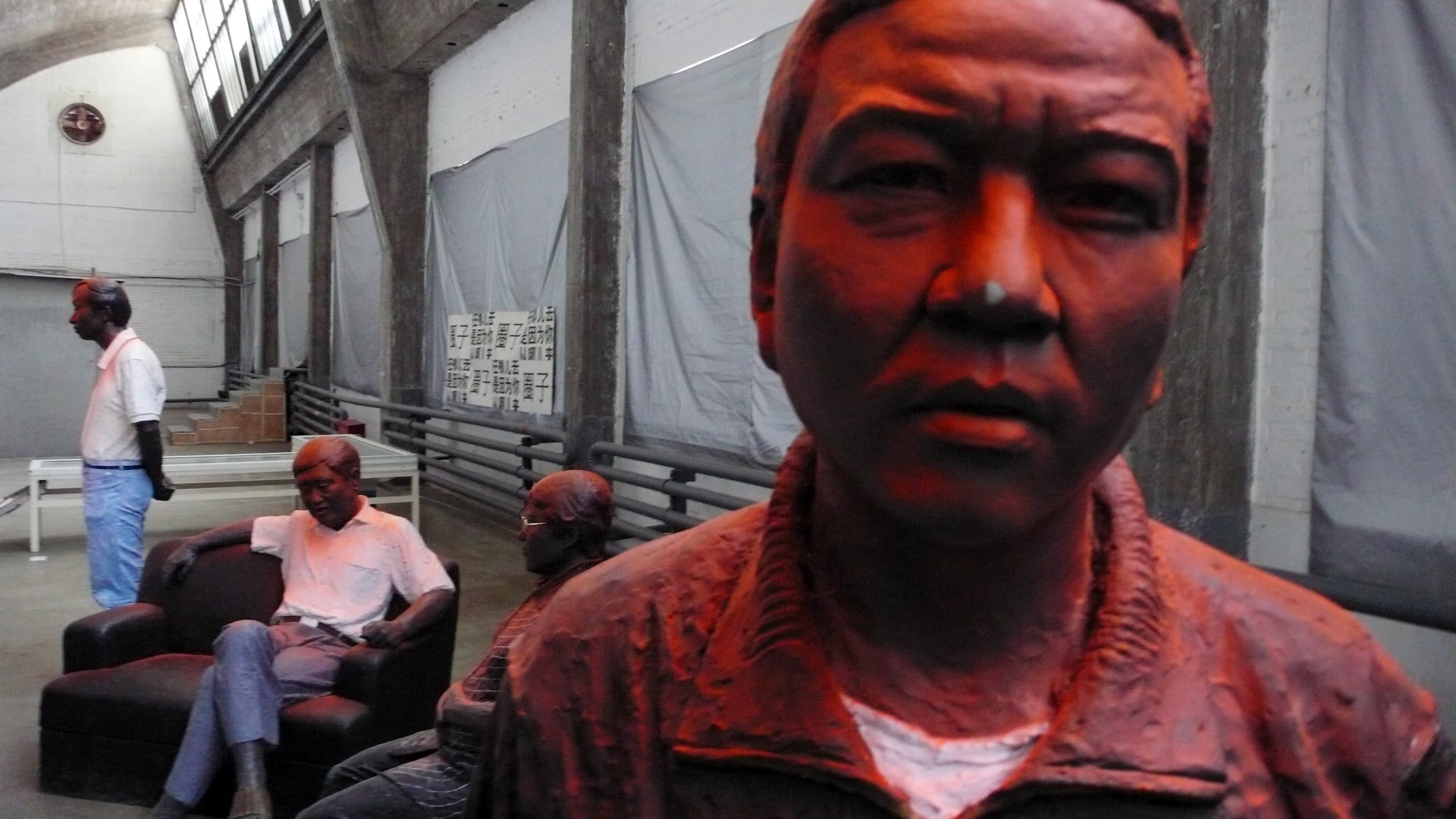
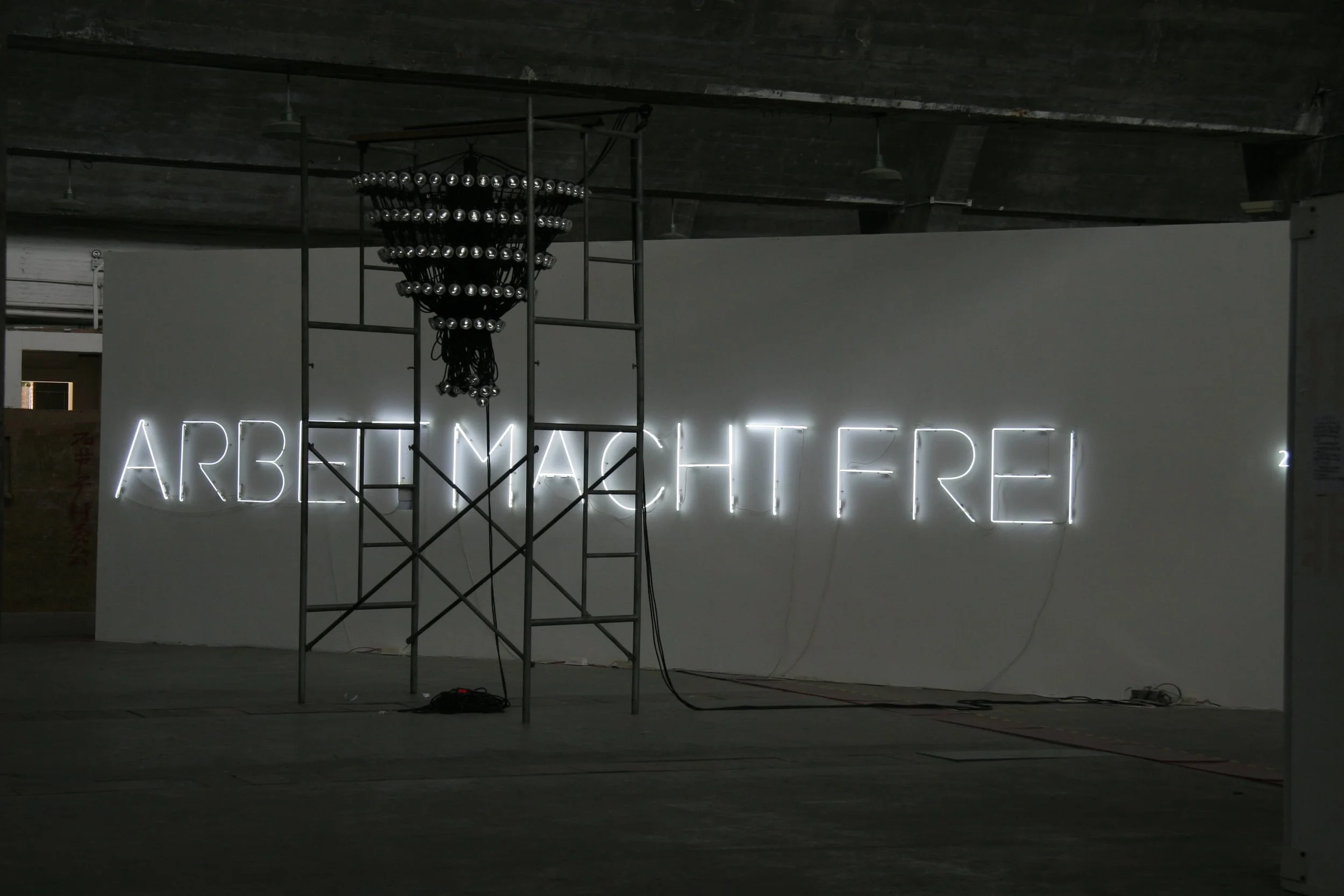

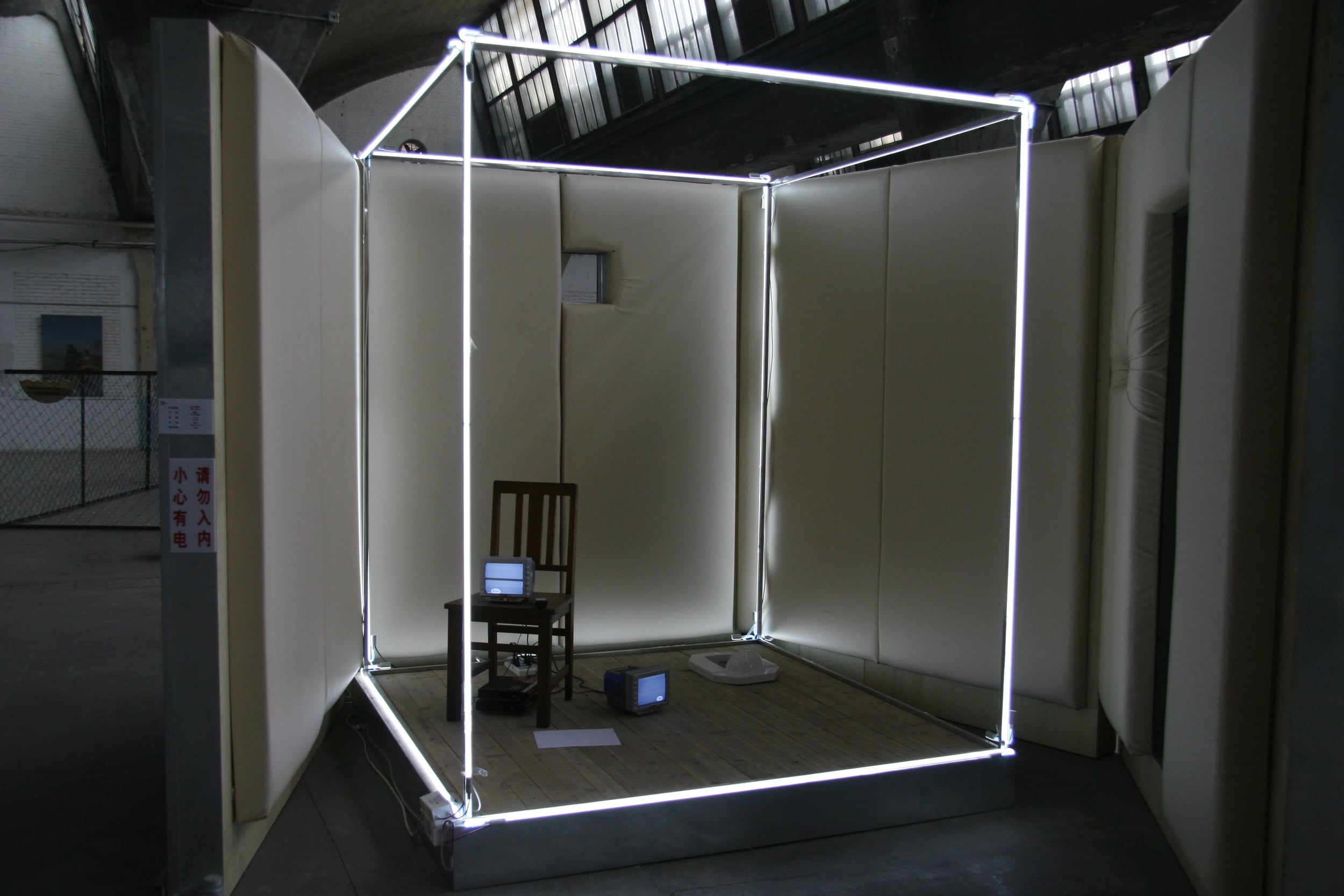
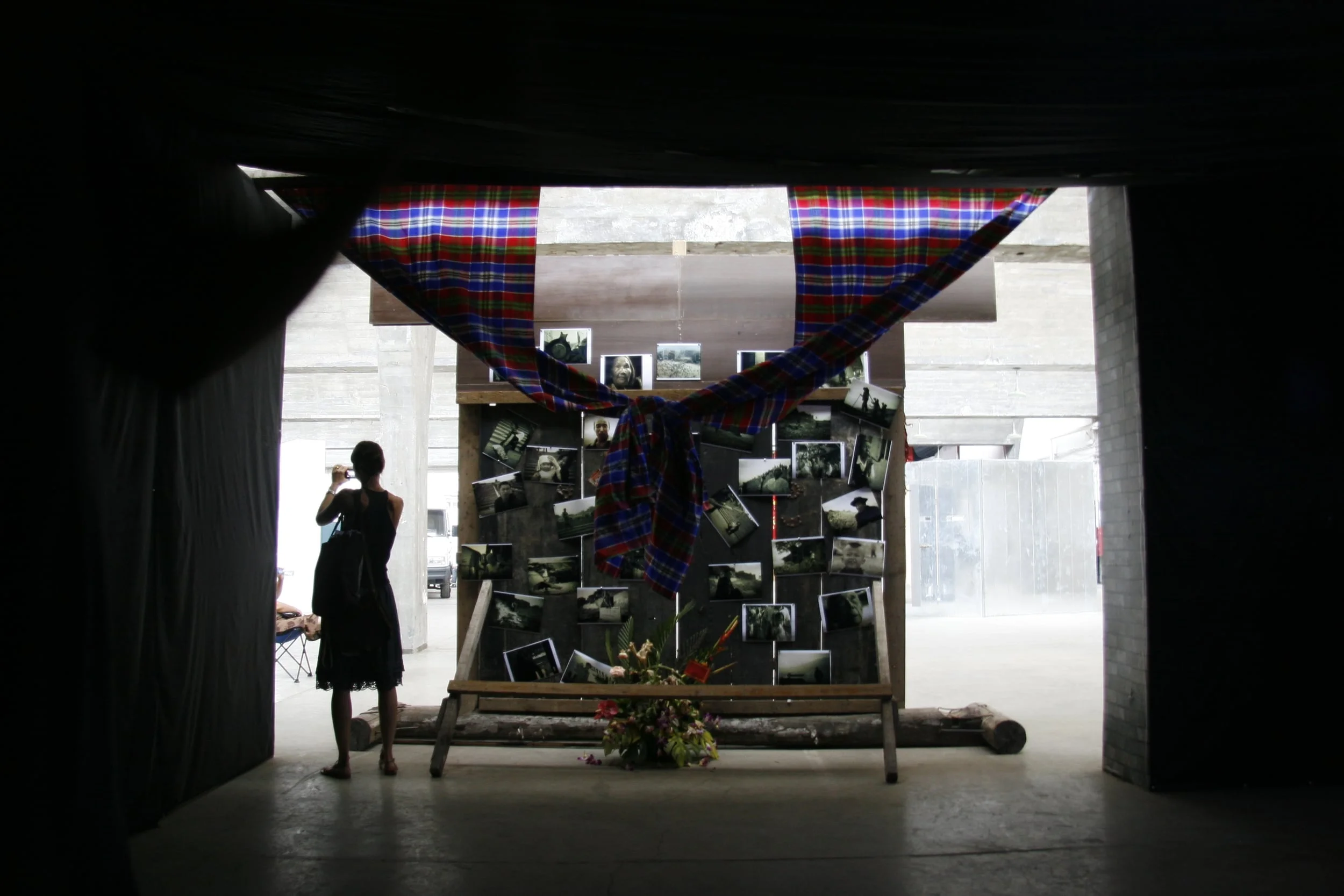
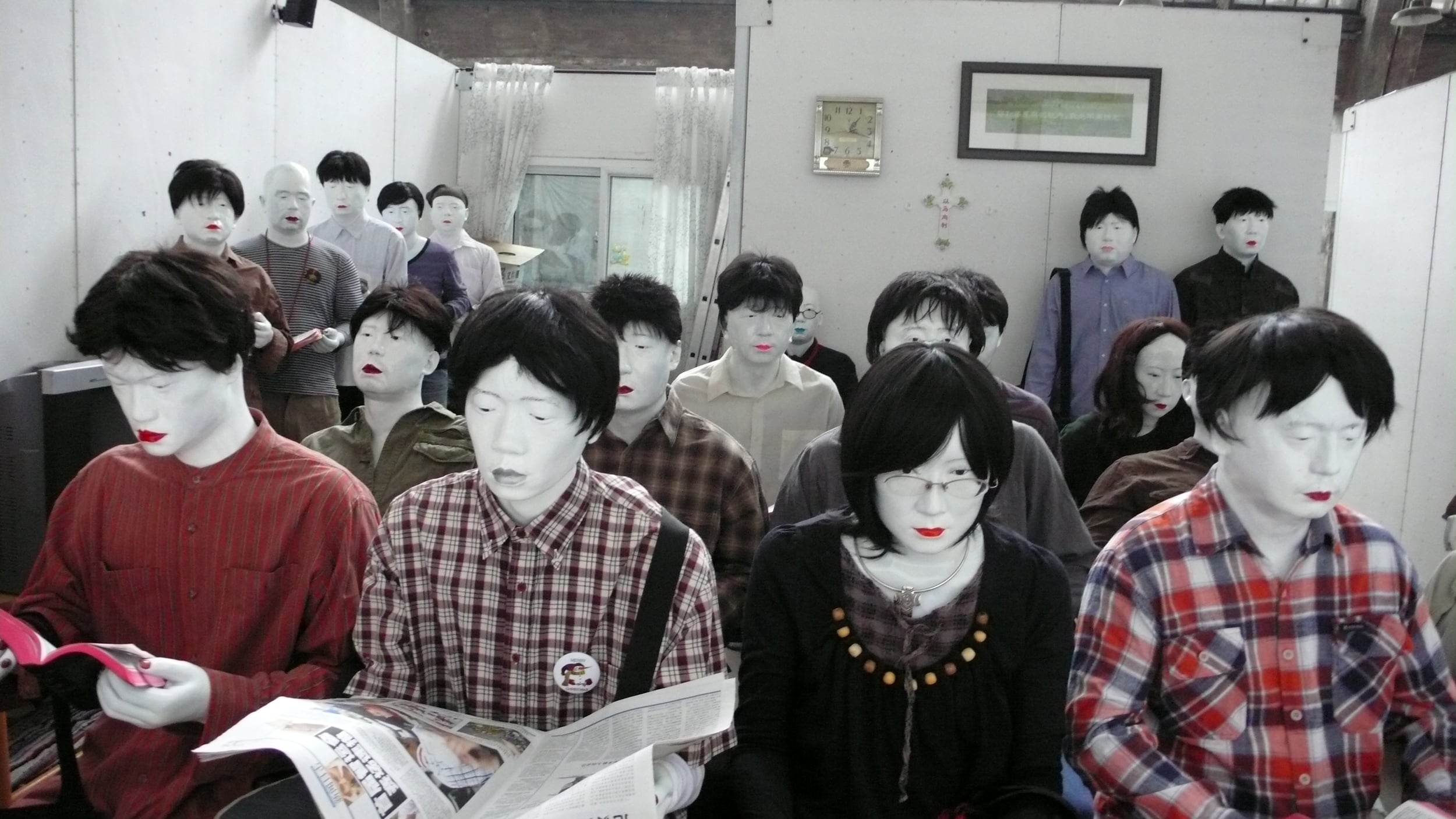
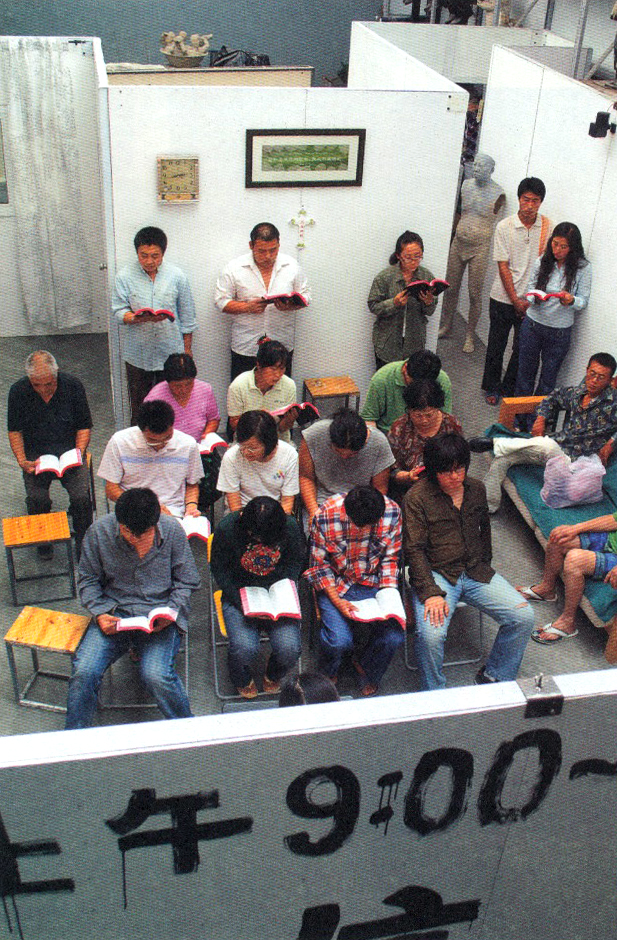

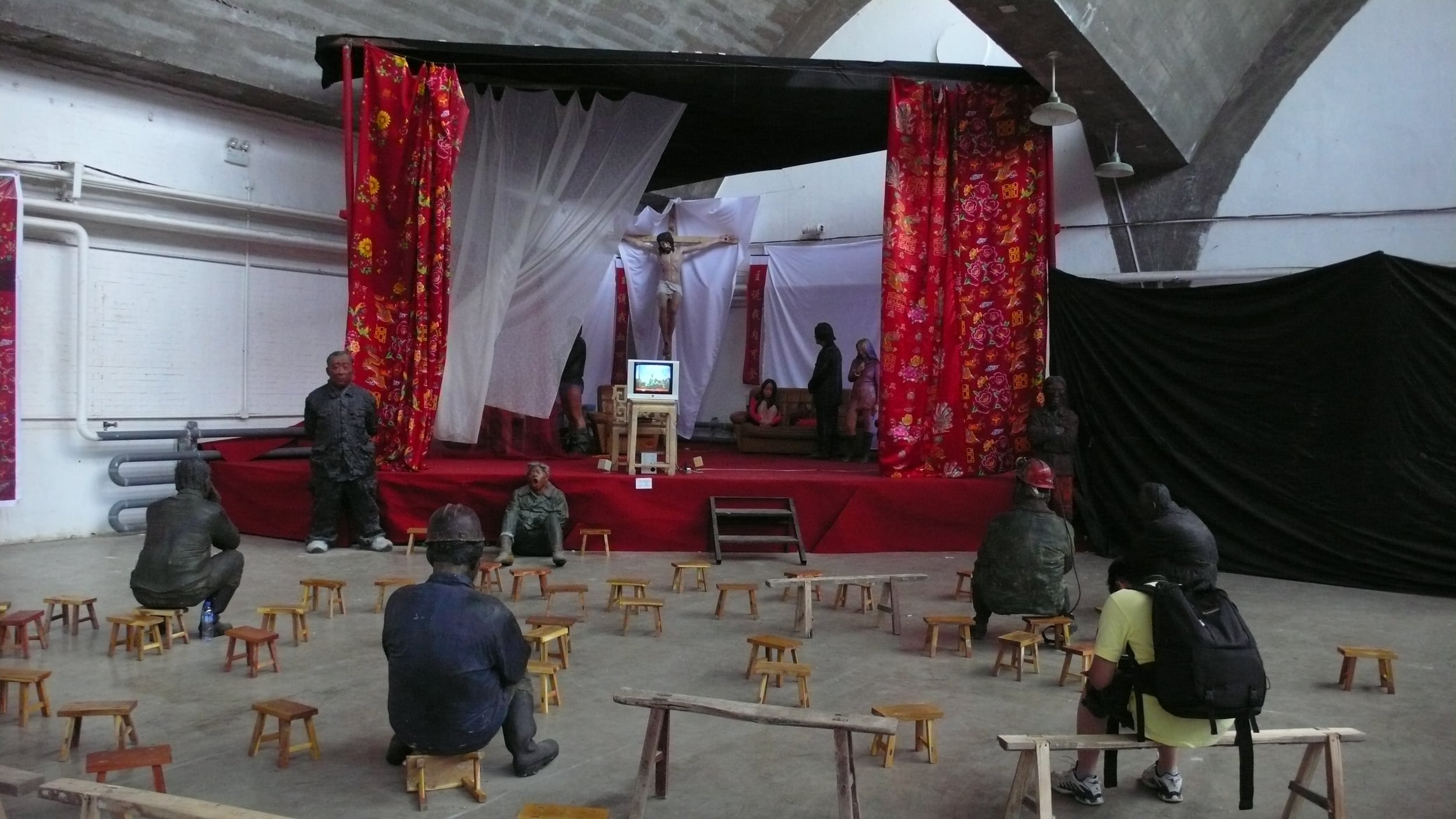
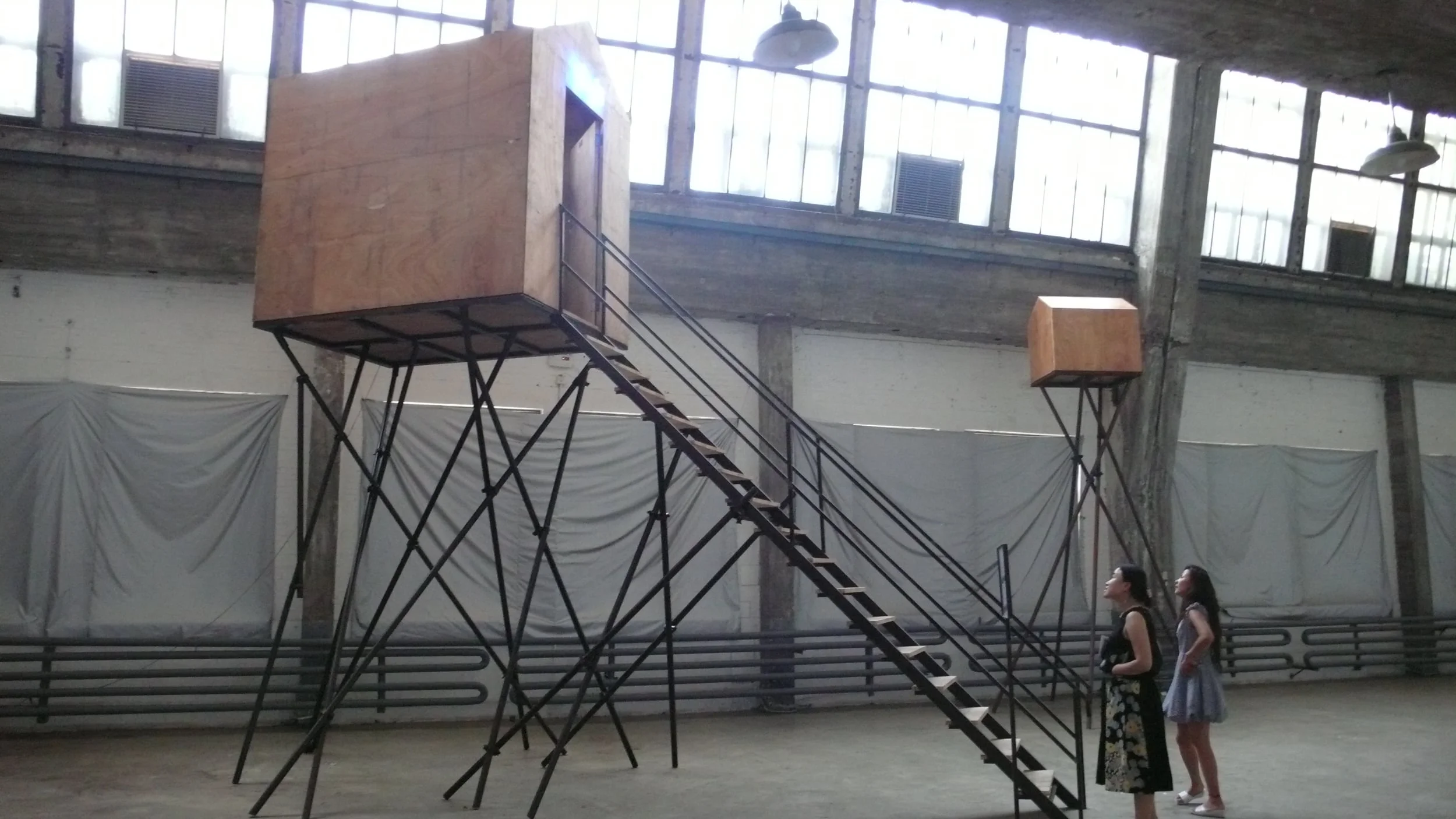

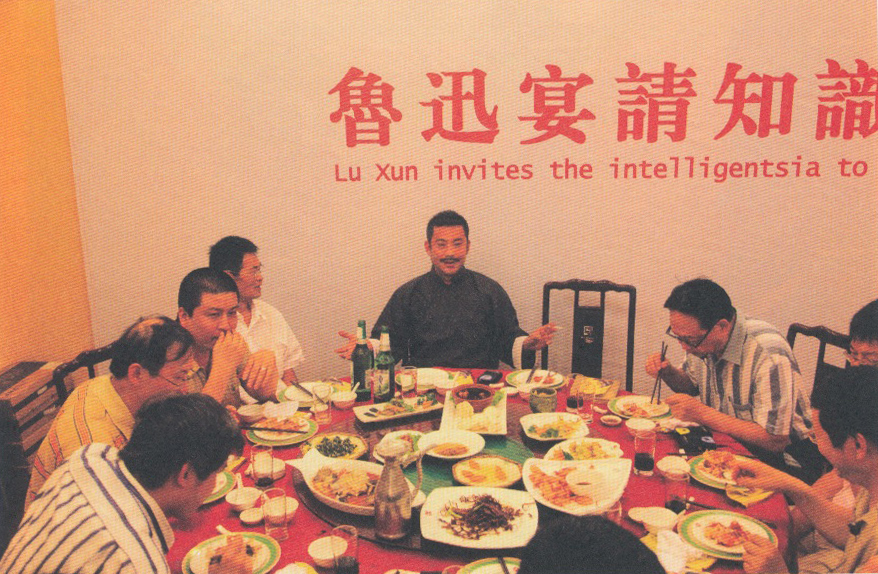
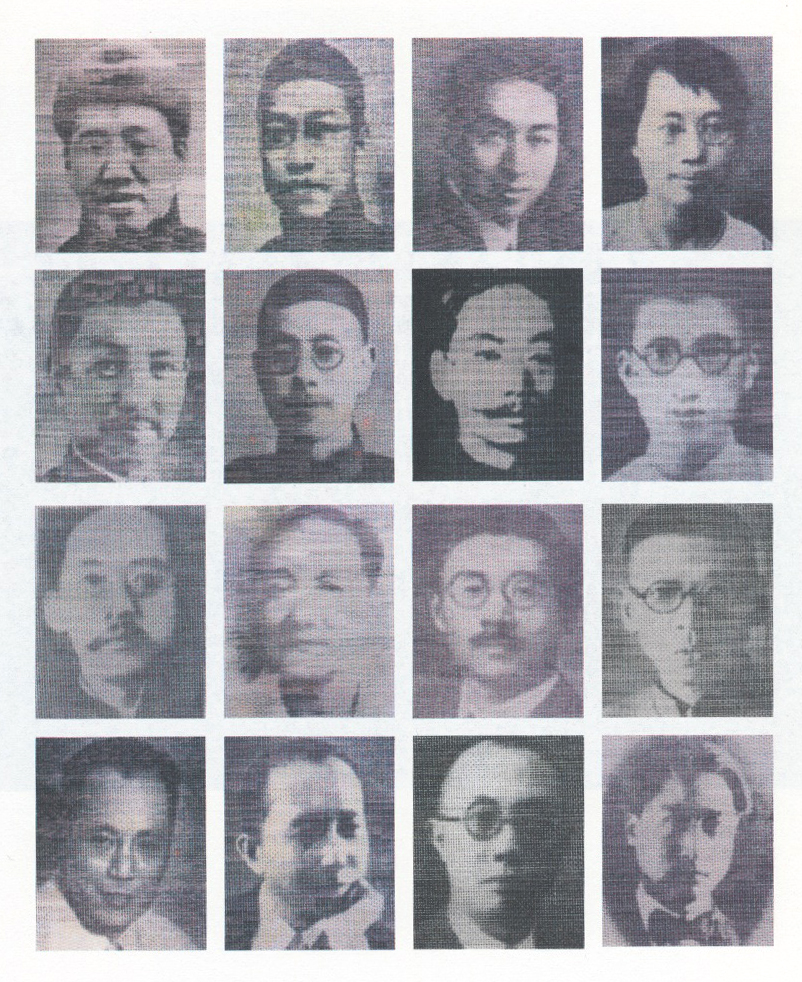
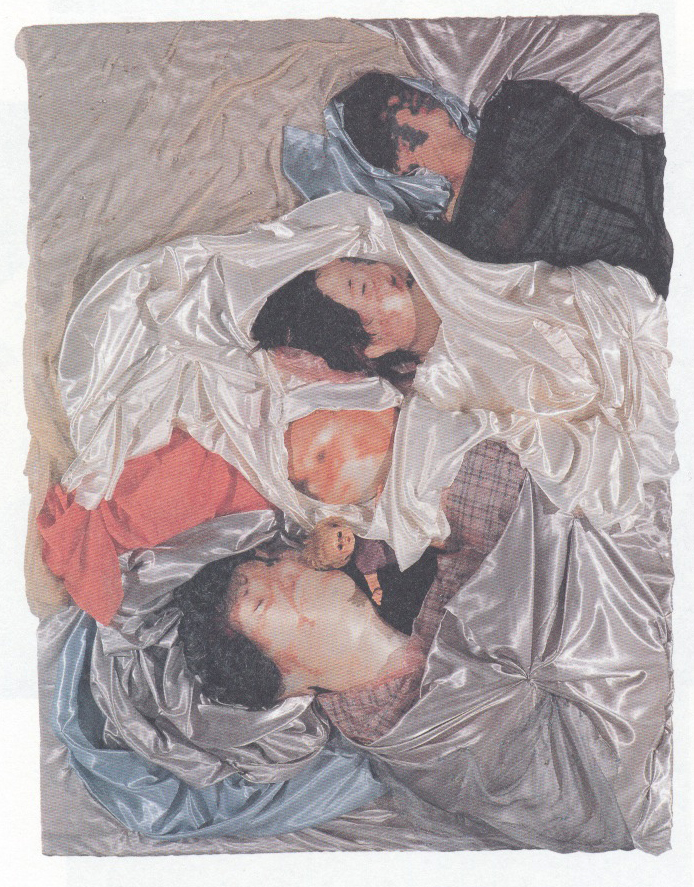

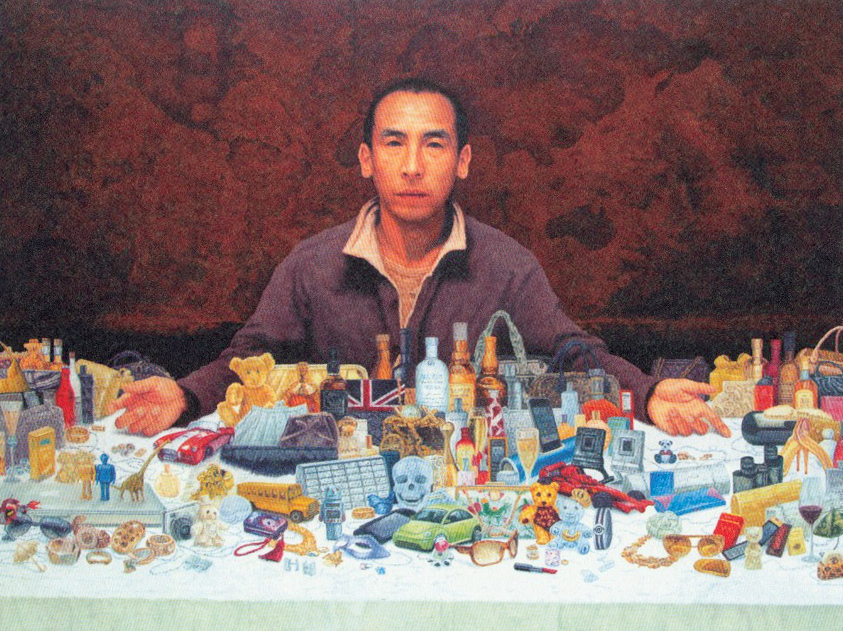

Curator:朱其 (Zhu Qi), China
Artists:原弓 (Yuang Gong)、靳勒 (Jin Le)、蒋崇无 (Jiang Chongwu)、吴小军 (Wu Xiaojun)、郭海平 (Guo Haiping) + 黄药(Huang Yao) + 罗隶 (Luo Li)、陈光 (Chen Guang)、金阳平 (Jin Yangping)、王钟 (Wang Zhong)、旺忘望 (Wang Wangwang)、徐勇 (Xu Yong)、黄文亚 (Huang Wenya)、张可欣 (Zhang Kexin)、东方涂钦 (Dong Fang Tuqin)、张建华 (Zhang Jianhua)、孙平 (Sun Ping)、默默(Mo Mo)、金峰(Jin Feng)、周墙 (Zhou Qiang)、王煜宏 (Wang Yuhong)、刘家琨 (Liu Jiakun)、车润田 (Che Runtian)、肖娟 (Xiao Juan)、 郭笳 (Guao Jia) 、张利生 (Zhang Lisheng)、符号小组 (Symbol )、丁武 (Ding Wu)、左小祖咒 (Zuo Xiaozuzhou)
Dates: August 15 to September 12, 2009
Veune: 706 Space, 798 Art Zone, Beijing, China
The name of the main exhibition in this year’s biennial is “The Drifting Communities.” This exhibition focuses on the different forms of existence and behaviors of people outside of the mainstream status quo.
“Contemporary art” in China had achieved phenomenal success in the market and on the international stage. But this thriving representation is in fact very much disjointed from the actual domestic conditions that are happening in China. Only if contemporary art can participate in the actual social development and in the refinement of its present “state of mind”—that is, to express the real psychological conditions in the mainland and seek ways of expression from locally rooted conditions (and not simply manipulating existing forms of artistic expression that originate from the West, but developing language of expression can be truly linked to its tradition)—then will Chinese contemporary art be identified as truly innovative and thus be recognized by its society.
“The Drifting Communities” attempts to explore the following tendencies:
1. The “Drifting” in a society
The transformation of a society is based on the idea of drifting in a socially based environment. Any mainstream status quo is the representation of a compliance to a specific result. But outside of the mainstream, people are drifting, transiting, keeping a nomadic existence, and desiring different ways of living as motivated by the urge for freedom and imagination. All of these activities, on one hand, change the holistic relationship between the individual and the group; on the other hand, a new network is formed by people outside of the mainstream that will ultimately cause change to the main social structure—this enables a new conceptual transformation to take place in the overall social consciousness.
This is the basis for the production of new culture and new art, a basis which can also be translated as a reinterpretation of the value and forms of art as reflected by its own state of existence. Chinese “contemporary art” over-emphasizes conceptualization, with much focus paid to the relationship between language and art’s own self-reflexivity. This focus neglects the basic relationship between art’s continuous transformation as a whole and the shifts that exist in different conditions of existence. People’s lives are undergoing fundamental changes in China. Everyday, different dramatic and surrealistic developments are found everywhere. The drama and the hyper-real in China contain all the language modes and structural characteristics that are available for the future exploration in art making.
The making of a language in Chinese contemporary art can be enriched by reflecting on the actual conditions that are happening within China. For example, the formation of a “nail household” was the result of local resistance against Chinese real estate developers; such can be seen as an innovative, artistic collaboration in the making of a “social sculpture.” The “nail household” is not the result of an art project originating from an individual, but a “stalemate” formed by various social forces that happened to meet at a point due to a confrontation of different vested interests. The “nail household” is simply a refracted "thingly" appearance and a metaphor for a social structure; it is actually the inherent structural force that brought forth a new visual social landscape.
The drifting and the dramatic changes that are happening in China will in fact play a crucial role in re-defining the category of Chinese “contemporary art.”
2. A sense of the “Communities”
The miracle of globalized capitalism and China’s market economy has fostered a much stronger nation-system, a powerful financial capital, and a globalized resource, labor force, dissemination of information, and commuting platform—all with a corresponding sense of intense individualism. But what has been weakened and crippled is the awareness of the “communities.” After the failure of the communist movement, people have lost a sense of direction as to how best to rebuild a meaningful model for a self-regulating community outside of a system of capitalism and its associated monopolization.
In contemporary China, community awareness is still a rather blurry concept. One reason for this is because of a lack of strict distinction between the society and the nation-state. The people do not possess their own land, since all land is administrated, distributed, and controlled by the country. From the point of view of the people, the land is like a carpet that can be taken away at any time, so the society has grown to be dependant on the state. During the three decades since the Chinese economic reform, and under the guidance of individualism and socially driven consumerism, a new generation has developed with extreme egocentrism and self-awareness, but in between the immensity of the country and the individual subject, a definite and self-regulating “community” mentality is still missing. People lack the sense of self-sufficiency in society because they have become habitual in appealing for assistance to the state and to the market, both of which can only provide help in the most general way. The people do not appeal to different kinds of local communities for help, as they do not expect to receive any support from them.
Mainstream contemporary art in China in the past ten years had shown a keen interest in the exploration of power, money, and symbols. But it has neglected a close tie with the public and the civil society. This biennale stresses on the idea of the “communities,” and under the banner and through the means of art, attempts to work with those who are not part of the mainstream, and to help artists in forging a relationship with the “communities” in a society. Under the term "art" and its different signifying possibilities, this year’s exhibition targets on promoting the artists’ condition of existence and the awareness of the “communities.” It needs to be pointed out that this exhibition is not concerned with whether the specific forms and concepts presented are considered “art” or not.
The clamor of commercializing Chinese contemporary art during the past few years had also encouraged a number of artists to start paying substantial attention to the need for social participation. For example, Ai Weiwei investigated the casualties of the students at Beichuan; Nanjing artist Guo Haiping taught painting to patients at a psychiatric ward; Gangsu artist Jin Le was the head of a village where he built a contemporary art museum; Shanghai artist Yuan Gong participated in the rescue of the Sichuan earthquake and recorded the situation of the underprivileged in the disaster-stricken zone.
In the arts, and under the category of social awareness, the different engagements initiated by the artists mentioned above are considered important departure points in the field of contemporary art. The present characteristics of Chinese “contemporary art” call for a sense of “reverence” and “sanctity,” and not cartoons, cynicism and “neo-cynicism.” The language of the social in contemporary art must reflect the essential characteristics that originate from a deeper understanding of the reality in China; this language must also be related to the land, to the “communities,” to the unprecedented drift in mobility, and to the unique expressions of “tragedy” that exist today.
